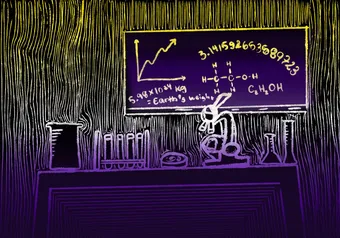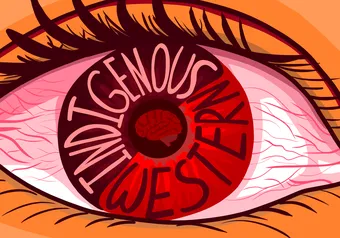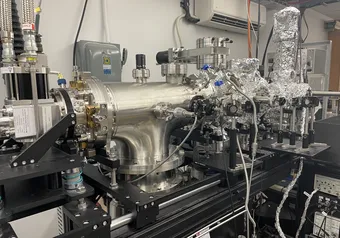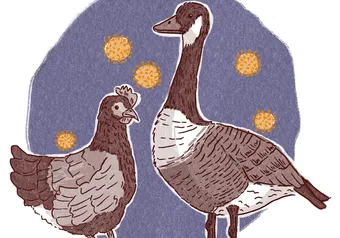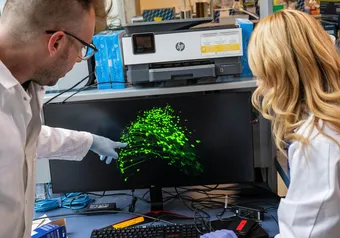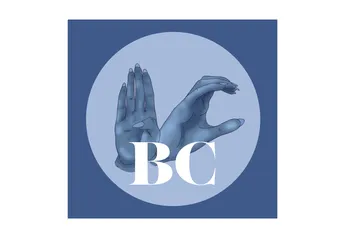Raising a new house pole, repatriating a stolen house pole and sharing knowledge of Nisga’a language and culture through virtual reality technology.
These are the goals of a new project led by Dr. Amy Parent, an assistant professor in UBC’s department of educational studies. Parent is a citizen of the Nisga’a Nation, whose Nisga’a name is Noxs Ts’aawit (Mother of the Raven Warrior Chief) and is from the House of Niis Joohl.
The project is highly collaborative, and Parent works closely with Nisga’a Chiefs and Matriarchs, language educators, the Laxgalts’ap Village government and the Nisga’a Lisims government to bring it to fruition.
“This project really wouldn't be possible if it hadn't been for decades of activism and tireless work that has been done by many within our nation to continue keeping our culture and our language alive,” she said.
According to Parent, the project grew from an effort to raise a house pole that was carved as a replica of one stolen in 1929 by colonial ethnographer Marius Barbeau. Barbeau wrote that he had permission from the Canadian government upon stealing it.
The stolen Niis Joohl pole is currently displayed at the National Museum of Scotland in Edinburgh.
The replica pole was raised in 2019 by the House of Niis Joohl with the support of many in the Nisga’a Nation. As part of the current project, a new house pole will be carved this year for the House of Laay' by two emerging carvers.
A delegation from the House of Niis Joohl, including Parent, will also travel to Edinburgh in 2022 to begin the process of repatriating the stolen house pole.
“Everything that we do as Nisga’a peoples is holistic. ... So there’s a carving of a new pole, there was a raising of a replica pole and then there’s a repatriation of the Niis Joohl original pole,” said Parent.
“It's about resurgence and reclamation and remembrance in terms of those three pieces … reclamation is ultimately about justice and returning what is rightfully ours.”
The carvings on each house pole also act as a visual record of important information.
“The poles themselves have significant knowledge in them. They are what I would consider a living constitutional document for us,” said Parent.
“Each pole represents a chapter in the Nisga’a peoples’ cultural sovereignty to the land since time immemorial.”
The project also incorporates the use of virtual reality (VR) technology as a tool for teaching the Nisga’a language to Nisga’a people living both within and outside of Nisga’a territory.
“The VR piece is really about trying to engage different types of youth to undertake the commitment to engage with our language that may not be having that spark within the school system or even the opportunity, if they're urban Nisga’a citizens,” said Parent.
Virtual reality offers a unique opportunity to include necessary context that is not otherwise possible from a classroom or from outside Nisga’a territory.
“I see the VR tools as being helpful for urban Nisga’a people because it can create a connection to our land and to our language. Land is pivotal in shaping the development of our language, cultural behaviours, stories, laws and protocols,” Parent said.
The details of what will be recorded and how it will be filmed will be determined by a larger intergenerational research advisory committee, which will include hereditary Chiefs and Matriarchs, as well as Nisga’a language champions — educators currently teaching the Nisga’a language in schools— and Nisga’a youth.
“My initial vision is to shoot drone aerial footage of publicly permissible land names,” said Parent. She is also looking to include stories told in the Nisga’a language about the land and significant oral history, as well as land-based walking tours with Nisga’a matriarchs, chiefs and knowledge holders.
Parent said that she has been “thinking about ways that I can engage youth in the making of the VR films, putting it into their hands as well, based on the guidance of a committee.”
At this time, those involved with the project are interested in being contacted by people who would be able to help.
“We are looking for the support of the Canadian public, Canadian officials and any other relationships that can support the repatriation of our pole in Scotland,” Parent said.
First online
Share this article


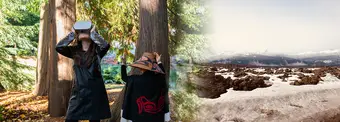
![['auto']](https://storage.googleapis.com/ubyssey/media/renditions/1.width-1000.format-webp_aZiOtG7.webp)
